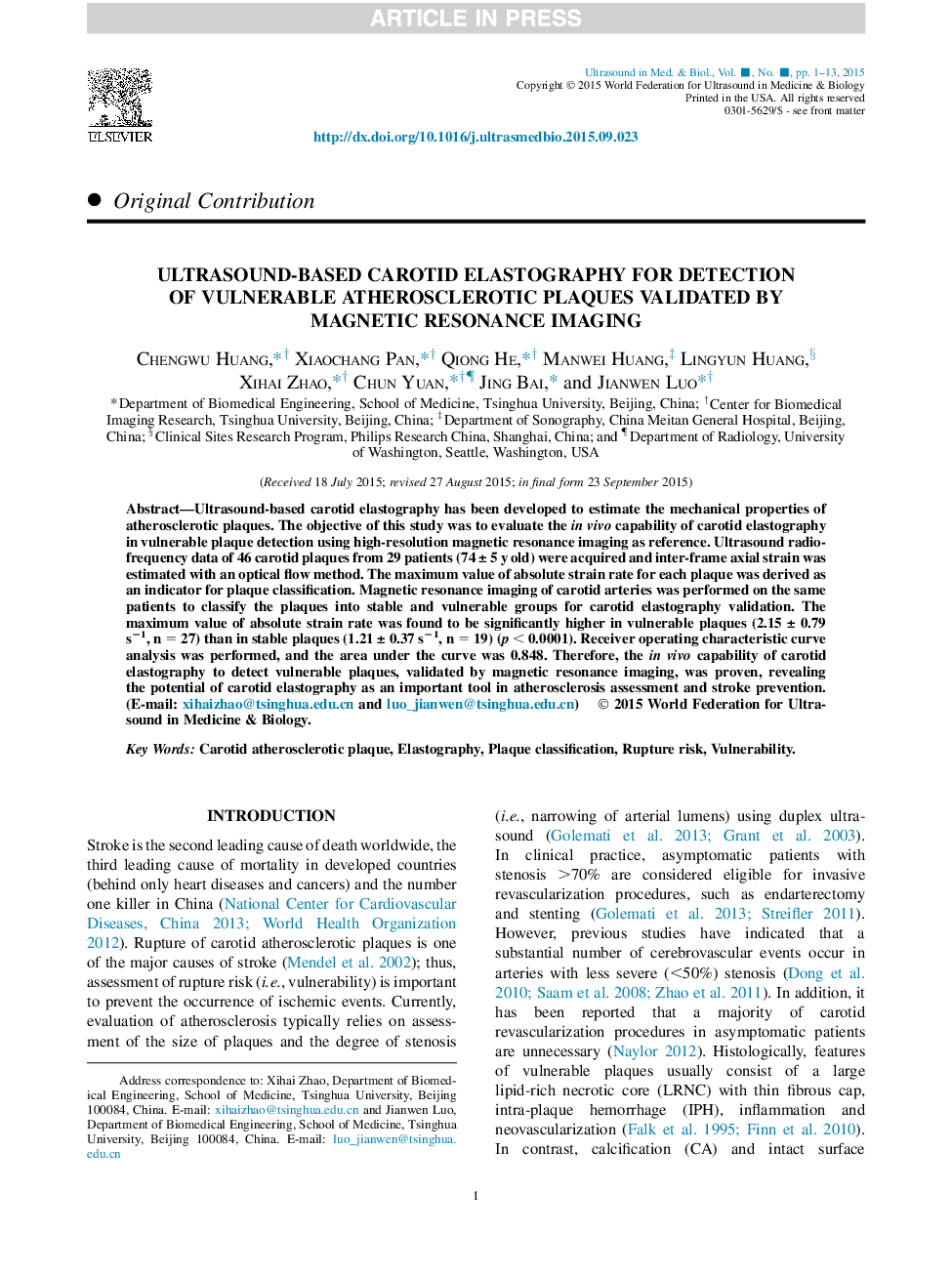| Article ID | Journal | Published Year | Pages | File Type |
|---|---|---|---|---|
| 1760130 | Ultrasound in Medicine & Biology | 2016 | 13 Pages |
Abstract
Ultrasound-based carotid elastography has been developed to estimate the mechanical properties of atherosclerotic plaques. The objective of this study was to evaluate the in vivo capability of carotid elastography in vulnerable plaque detection using high-resolution magnetic resonance imaging as reference. Ultrasound radiofrequency data of 46 carotid plaques from 29 patients (74 ± 5 y old) were acquired and inter-frame axial strain was estimated with an optical flow method. The maximum value of absolute strain rate for each plaque was derived as an indicator for plaque classification. Magnetic resonance imaging of carotid arteries was performed on the same patients to classify the plaques into stable and vulnerable groups for carotid elastography validation. The maximum value of absolute strain rate was found to be significantly higher in vulnerable plaques (2.15 ± 0.79 sâ1, n = 27) than in stable plaques (1.21 ± 0.37 sâ1, n = 19) (p < 0.0001). Receiver operating characteristic curve analysis was performed, and the area under the curve was 0.848. Therefore, the in vivo capability of carotid elastography to detect vulnerable plaques, validated by magnetic resonance imaging, was proven, revealing the potential of carotid elastography as an important tool in atherosclerosis assessment and stroke prevention.
Related Topics
Physical Sciences and Engineering
Physics and Astronomy
Acoustics and Ultrasonics
Authors
Chengwu Huang, Xiaochang Pan, Qiong He, Manwei Huang, Lingyun Huang, Xihai Zhao, Chun Yuan, Jing Bai, Jianwen Luo,
